Narrative History
The exact events surrounding the beginning of the Shoal Creek Baptist Church are unclear.
Like most of their contemporaries elsewhere, the pioneering people who ventured into new territory in Alabama to homestead and make a life were more focused on their urgent needs rather than leaving a detailed record for posterity. They knew that if they weren’t successful there would be no posterity. Among their needs were those of worship and community; met by creating the Shoal Creek Church.
Their legacy to us is borne in our attraction to their homeland and our felt fondness for the last remaining structure of their once-thriving mountain community.
 Photo from a 1984 article in “The Anniston Star” that reported the annual Labor Day singing at Shoal Creek Church.
Photo from a 1984 article in “The Anniston Star” that reported the annual Labor Day singing at Shoal Creek Church.Who were these people and from where did they come?
Alabama had been granted statehood in 1819. The region of east central Alabama was part of the Creek Indian Territory until the Treaty of 1832 led to the vacating of this area by Native Americans. In the early 1830’s, descendants of European settlers began a rather large migration movement from the Carolinas through Georgia and began to claim parcels of land here for homesteading. In 1866, the Shoal Creek region was incorporated into present day Cleburne County that was formed from parts of Benton, Randolph, and Clay counties.Families bearing the names of Thompson, Coleman, Roach, Patty, Holley, Edwards, Jones, Cheatwood, Copeland, Smith, Knighten and others populated these hills and “hollers” in the Appalachian foothills of Cleburne County. Many were related to each other; all were farmers and hunters, some were loggers and maybe a few were moonshiners.
In their midst, and near a fine source of spring water, they built a log church that still stands, one of a few that remain in the southeast region of the U.S. – or anywhere. The present church building is apparently the third to have been built at the site. The first was a Primitive Baptist church erected about 1845. It was a log building situated on 0.83 acres that included the present graveyard site. That congregation disbanded probably in the late 1870’s or early 1880’s. The building continued to stand until about 1905 when it was removed and incorporated into a residence.
Narrative History Cont’d
In the early 1880’s a Missionary Baptist Church was built on an adjoining two-acre site. Robert R. Cheatwood later donated these two acres to the church on August 31, 1889. That structure soon burned and was replaced by the present building about 1895. No known records of the church exist before 1897. We do know that in 1898 there were 63 male members and 76 female members. Records we do have are quite insightful into the mindset of the church founders and their beliefs. The minutes have many gaps but it seems meetings were held each month, weather permitting, with worship services in the mornings and church conferences in the afternoons. The building was also used on occasion as a schoolhouse.In the early 1900’s families began to leave the mountainous area and move into more accessible (and less unprofitable) areas of Cleburne and Calhoun counties. Large timber companies were willing to buy the lands, and the populace could live better elsewhere. The largest of these buyers were the Burt Timber Company and the Alabama Mineral Lands Company. The federal government later bought large parcels of land from these companies and in 1936, President Roosevelt, by proclamation, created the Talladega National Forest . This encompassed the entire region of the former Shoal Creek community and church.
 Six descendants of church members pose with book of minutes and other documents as part of the application to National Register of Historic Places. Included in the picture are Ellis Thompson, Martha (Mrs. Newman) Roach, Newman Roach, Alvin Jack Roach, and Pink Holley.
Six descendants of church members pose with book of minutes and other documents as part of the application to National Register of Historic Places. Included in the picture are Ellis Thompson, Martha (Mrs. Newman) Roach, Newman Roach, Alvin Jack Roach, and Pink Holley. A sign on the Pinhoti Trail just above the cemetery was place in the early 1970’s. Note that there are two errors at the bottom: Sacred Harp is four note (or part) music.
A sign on the Pinhoti Trail just above the cemetery was place in the early 1970’s. Note that there are two errors at the bottom: Sacred Harp is four note (or part) music. National Register plaque
National Register plaqueSacred Harp Singing
There is no record of the formal end of the church fellowship. The church declined due to membership relocation and by 1914 apparently so many had left, that the church no longer met regularly. The last entry in the existing minutes is dated September 6, 1914. The last church clerk, R. A. Thompson, presented the minutes to the Cleburne County Library in August 1973. Since the cessation of the church fellowship, the building has been used occasionally for family gatherings, weddings, or for church services of a local congregation. It’s most regular use has been for an annual singing.For at least the last 85 years there has been an annual Sacred Harp Singing at the old church. For 50 of those years it was on either the 4th Sunday in July or the 4th Sunday in August. And for the last 35 years the gathering has occurred on Labor Day. A houseful of people come on each occasion, all bringing lunch, for there there is no host community – the nearest neighbors, discounting deer and turkey and squirrels, live miles and miles away. See the photos section for several pictures taken over the years of this unique Labor Day gathering. Literally thousands of tourists visit the old church each year.
[Note: Much of the information in this article was taken from a historical sketch written by William Lee Jones. Portions were drawn from other sources and the whole was written by Lee Randall Jones of Roanoke, Virginia, the originator and custodian of this site. Lee Randall is the nephew of William Lee, and is the son of Joseph M. Jones, the secretary-treasurer of the Shoal Creek Church Preservation Society. Readers might like also to know that the Jones family has another strong tie to the Shoal Creek area — they still take part every fall in a squirrel camp-hunt that has continued for more than a hundred years. But that’s another story….( this note submitted by Joseph M. Jones of Huntsville, AL)]
View the “Original Church” Reports
- We believe in one only true and living God, the Father, Son, and Holy Ghost, Three-In-One.
- We believe the Scriptures of the old and the new Testaments are the Word of God and the true rule of faith and practice.
- We believe the doctrine of election and that God chose his people in Christ before the foundation of the world through sanctification of the Spirit and believe in the truth.
- We believe in the doctrine of original sin.
- We believe in man’s inability to recover himself from the fallen state he is in by nature of his own ability.
- We believe that sinners are justified in the sight of God only by the merits of Jesus Christ by imputation.
- We believe that the saints shall persevere in grace and not finally fall away.
- We believe in the resurrection of the dead and a judgement.
- We believe that the joys of the righteous and the punishment of the wicked will be eternal.
- We believe that no minister has a right to the administration of the ordinances except he has been called of God and regularly baptized and approved by the church and come under the imposition of hands by a presbytery.
- We believe that none but regular Baptist believers have the right of communion at the Lord’s Supper.
There shall be a regular conference in each month which shall be opened and closed with prayer or singing.
The pastor shall be moderator when present. In case of absence the church shall appoint one.
The pastor and clerk shall be elected by ballot by a majority of the members present.
2. Open the doors of the church for membership.
3. Call for the peace of the church.
4. Call for references.
5. Acknowledgements.
6. General business
A motion made with a second shall be disposed of before another is taken up or withdrawn by the one that made it.
All members wishing to speak shall rise from their seats and address the moderator and shall not be interrupted unless they depart from the subject or use unChristian language. In such case they shall be called to order by the leader.
No member shall speak more than three times on any one subject without leave from the moderator or more than fifteen minutes at any one time.
The appellation of “brother” shall be used in our address one to another.
All free male members missing three regular conferences shall be sent for by the church.
There shall be no abrupt conduct in time of conference; neither shall any member withdraw himself without leave of the moderator.
If a member has his feelings hurt with any other they shall proceed as laid down in 18th chapter of Matthew.
The moderator shall be determined as judge of order and have the right to speak in any matter in debate but shall not vote unless in case of a tie.
The church shall have two or more deacons and it shall be their duty to look after the interest of the church.
Any member hearing an unfavorable report against another, it shall be their duty to bring it to the church.
Any male member committing a public or general offense, it shall be their duty to come forward at least the second conference and give satisfaction.
It shall be the duty of the church to keep a fair record of all her acts and sign her orders.
All decisions shall be by a majority present except that of fellowship which shall be unanimous.
All delegated power shall be by ballot. The foregoing rules may be altered or amended by two thirds majority voting in favor of it.
CONDITIONS FOR EXCLUSION FROM THE CHURCH: dancing, drinking, profanity, unChristian, conduct, departing from the faith, card playing, and similar offenses
PASTORS OF THE SHOAL CREEK BAPTIST CHURCH NAMED IN THE MINUTES 1898-1914
(Names are not listed in the order they served; some served more than once)
Robert McDough Cheatwood
W. J. Newborn
S. J. (G?) Cross
F. M. Coleman
J. R. Bannister
B. A. Cheatwood
F. E. Hubbard
W. H. Wells
P. F. Pritchett (Prichard?)
W. W. McElroy
J. W. Walker
W. E. Garner
W. A White – seems to have been the last pastor in the minutes.


